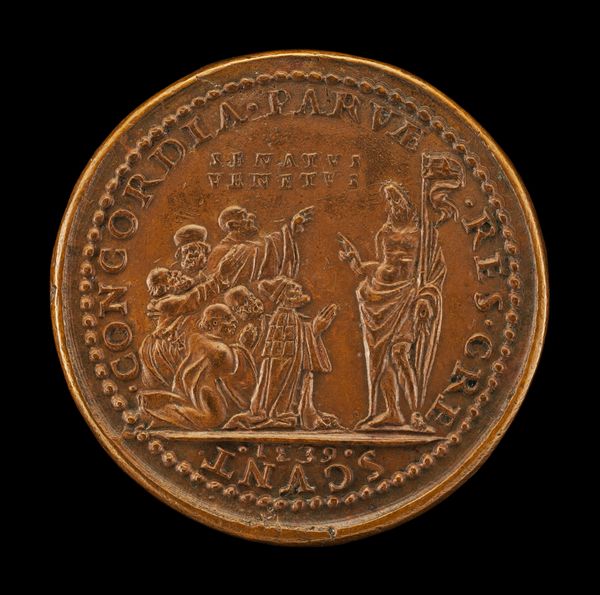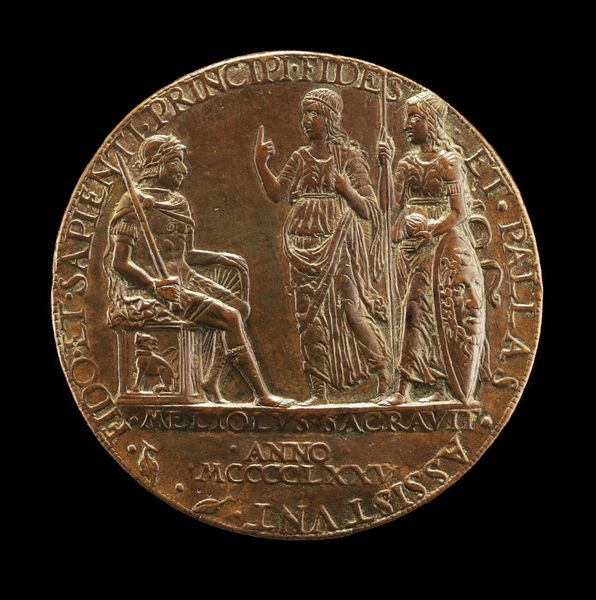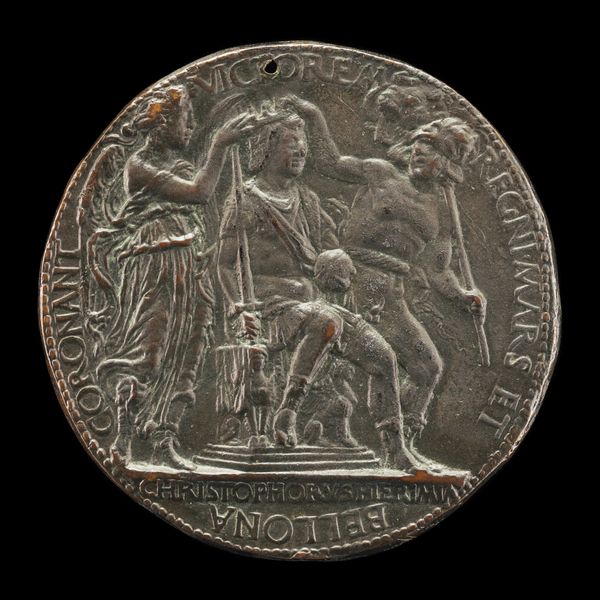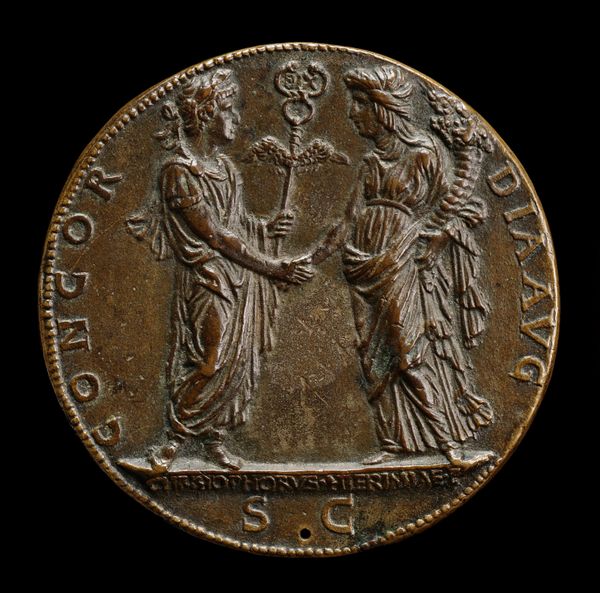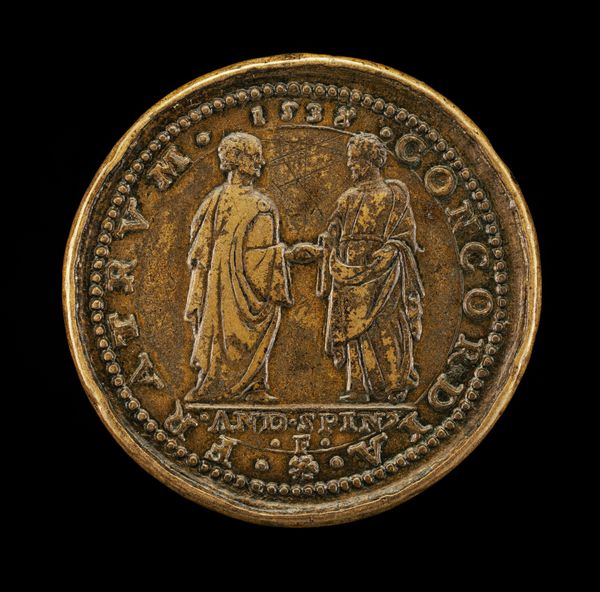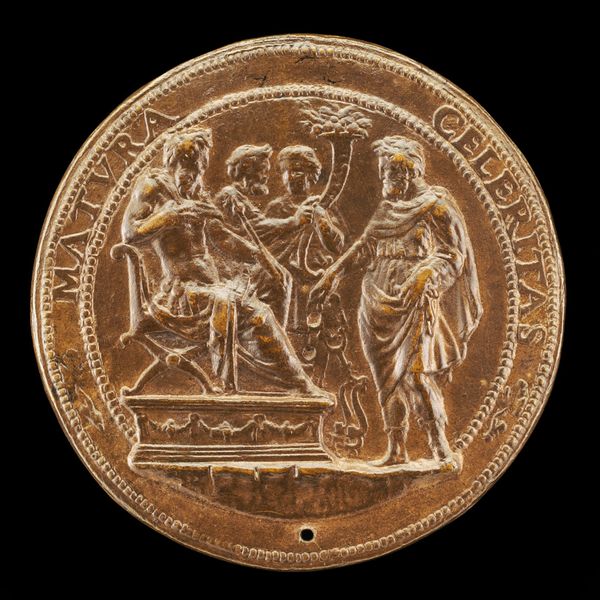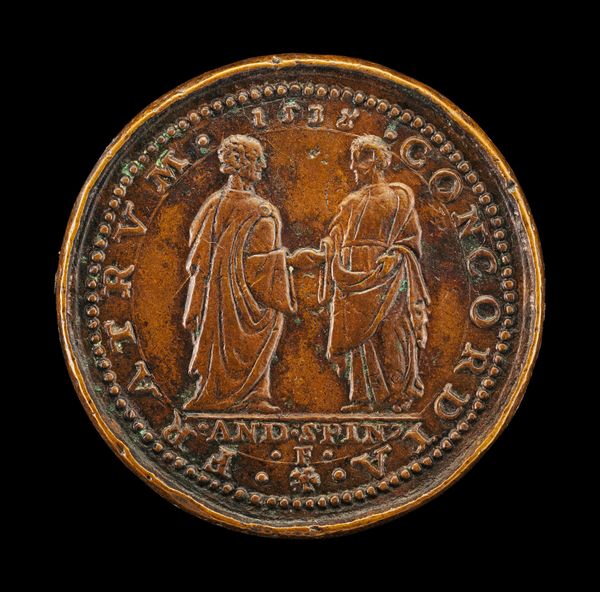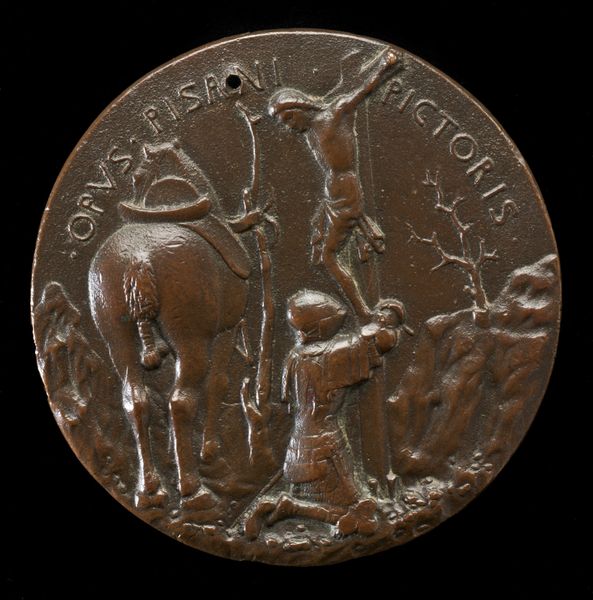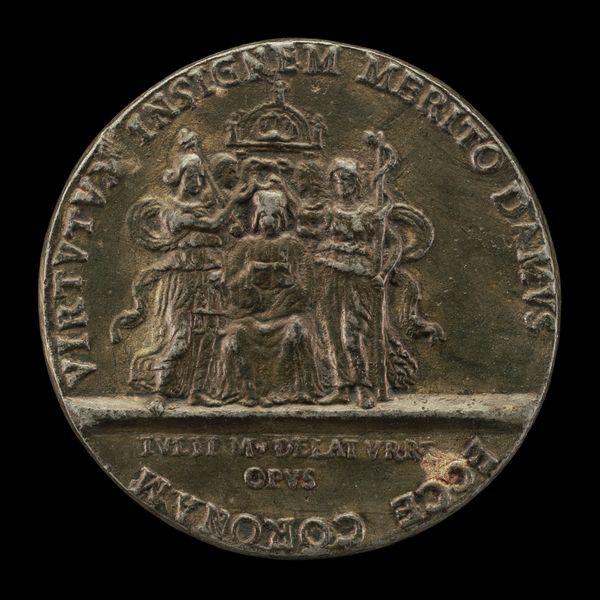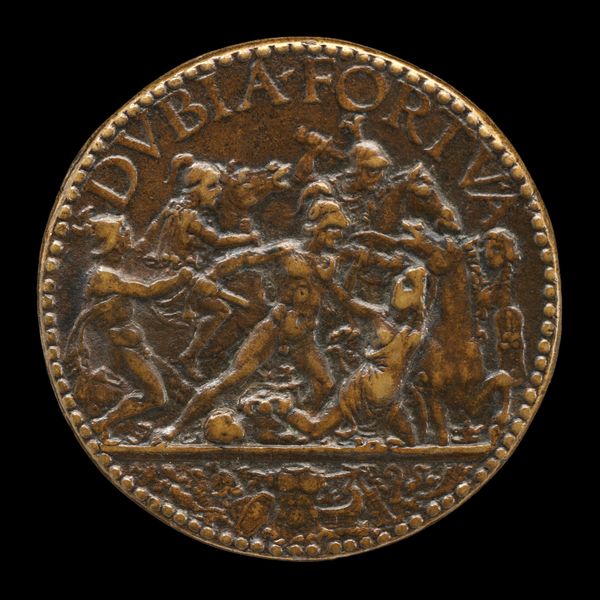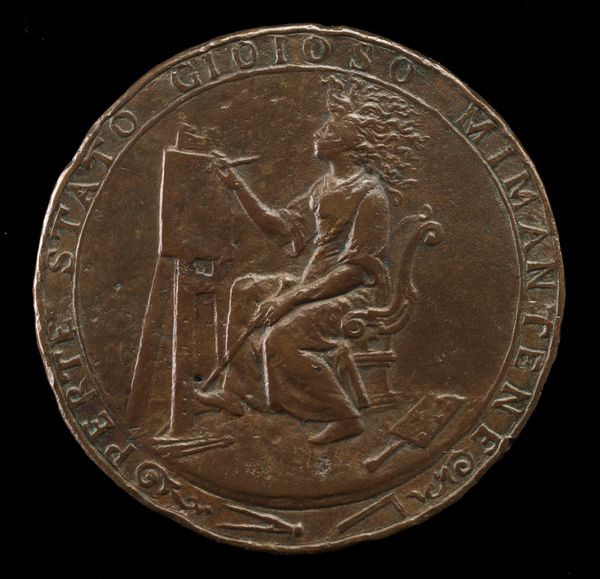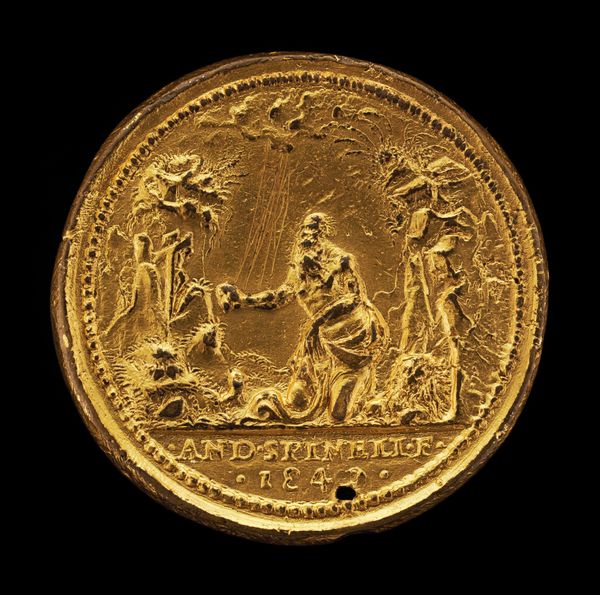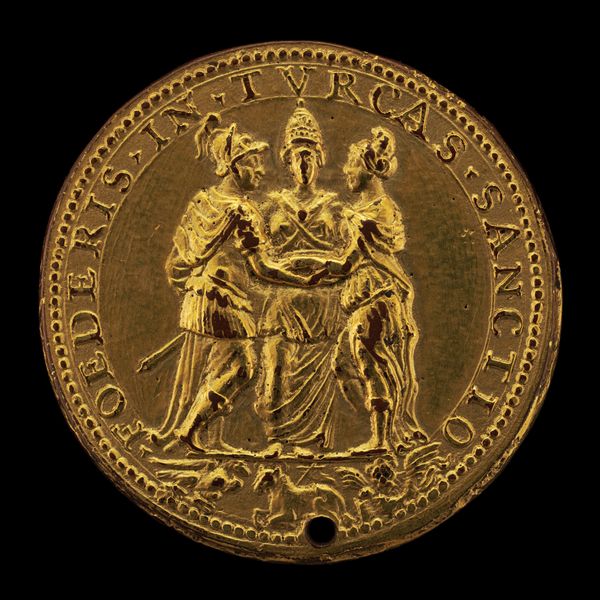![Francesco Gonzaga Giving Alms [reverse] by Gian Marco Cavalli](/_next/image?url=https%3A%2F%2Fd2w8kbdekdi1gv.cloudfront.net%2FeyJidWNrZXQiOiAiYXJ0ZXJhLWltYWdlcy1idWNrZXQiLCAia2V5IjogImFydHdvcmtzLzBmZDBkMGQyLTFhYTYtNGE1MS1hYWViLTJmOGRhYTY0ODE4Ny8wZmQwZDBkMi0xYWE2LTRhNTEtYWFlYi0yZjhkYWE2NDgxODdfZnVsbC5qcGciLCAiZWRpdHMiOiB7InJlc2l6ZSI6IHsid2lkdGgiOiAxOTIwLCAiaGVpZ2h0IjogMTkyMCwgImZpdCI6ICJpbnNpZGUifX19&w=3840&q=75)
relief, bronze, sculpture
#
portrait
#
medal
#
sculpture
#
relief
#
bronze
#
sculpture
#
history-painting
#
italian-renaissance
Dimensions: overall (diameter): 3.27 cm (1 5/16 in.) gross weight: 22.27 gr (0.049 lb.) axis: 11:00
Copyright: National Gallery of Art: CC0 1.0
Curator: At first glance, this small bronze relief from the Italian Renaissance might seem like a simple scene of charity. Editor: My gut reaction is that this is intensely…calculated. It's staged, every figure frozen in place as if posing for the ages. Something about it feels intentionally formal, almost cold, despite depicting almsgiving. Curator: Well, in fairness, this piece entitled "Francesco Gonzaga Giving Alms", was created around 1484-1506 by Gian Marco Cavalli as the reverse of a medal depicting the Marquis of Mantua. Medals, especially during the Renaissance, were never just art objects; they were carefully crafted propaganda. Editor: Ah, okay, "propaganda," that makes a lot of sense with what I'm seeing! The inscription really underlines that too. It’s this powerful statement chiseled around the perimeter and underneath – what does it say, exactly? Curator: The words that are inscribed reference, in Latin, both divine beneficence and also liberty. Together, they act to define Francesco as a compassionate leader. In Cavalli’s time period the intent was to cement legacy as much as honor the real work! Editor: Right, the leader-as-benefactor archetype. It's a theme that stretches back through antiquity. Is there any other kind of meaning held in this particular scene that would make sense to viewers? Curator: Look closer at the figures themselves. Notice how they aren't individualized? Each of them, in the way their garments drape and flow and gesture, they all contribute to a deliberate, classically-informed visual. Francesco's stance and classical garb connects him visually to rulers of the past. The scene emphasizes timeless virtues. Editor: So, it’s designed to tap into this established visual language of power and benevolence, linking Francesco Gonzaga to an idealized lineage. Which explains why those robes seem so stiff to my eye. Well, it’s been eye opening to realize how the arrangement reinforces Gonzaga's image, transforming charity into political theatre. Curator: Precisely. Understanding the cultural context is key when looking at Renaissance art; you often realize there’s a powerful statement beneath even what feels decorative.
Comments
No comments
Be the first to comment and join the conversation on the ultimate creative platform.
